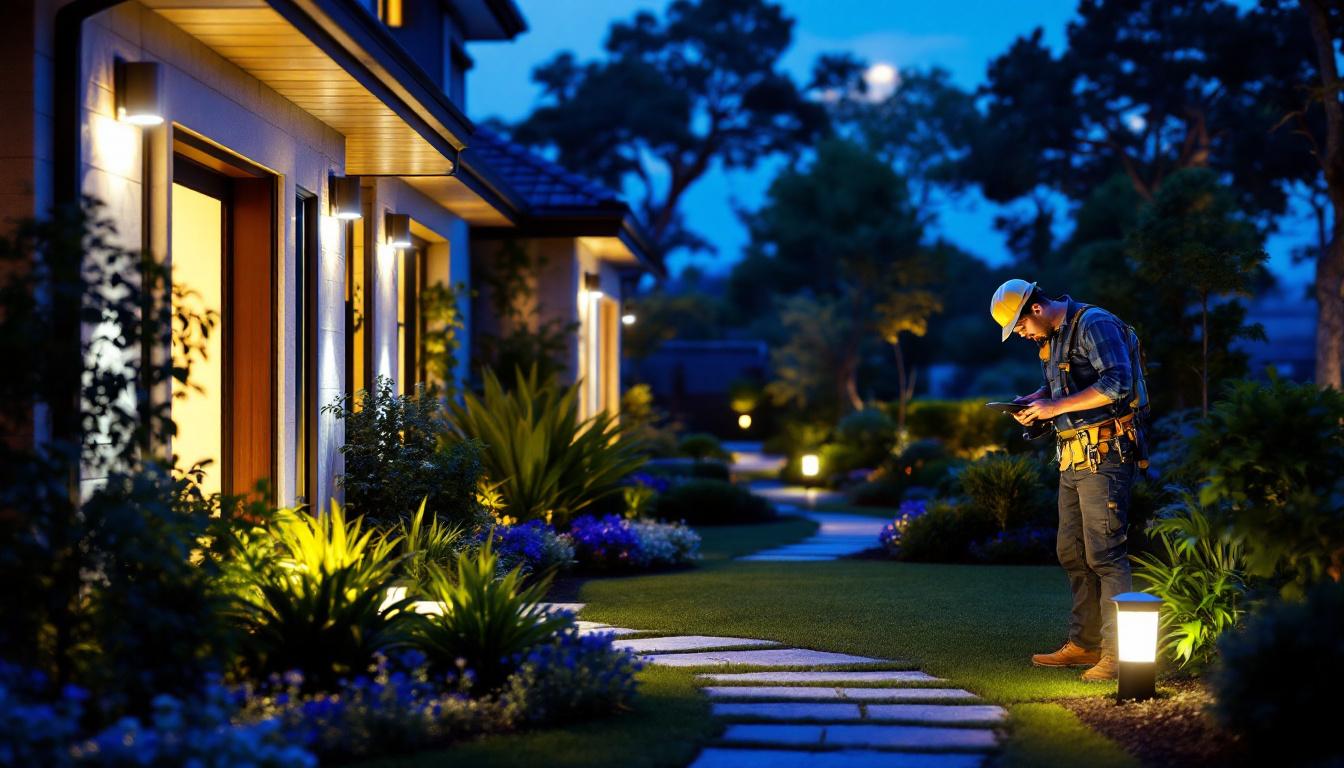
Lighting contractors frequently encounter decisions about upgrading or replacing fluorescent tubes in commercial and industrial settings. Two of the most common types are T8 and T12 tubes, each with distinct characteristics that influence performance, energy efficiency, and installation requirements.
The designation “T” refers to the tube diameter in eighths of an inch. Therefore, a T12 tube is 12/8 inches (1.5 inches) in diameter, while a T8 tube is 8/8 inches (1 inch). This difference in size affects the internal components, light output, and compatibility with fixtures.
Historically, T12 tubes have been the standard in many older installations due to their initial lower cost and widespread availability. However, T8 tubes have gained popularity because of their improved efficiency and longer lifespan. For lighting contractors, understanding these differences is critical when advising clients on upgrades or replacements.
In addition to their size and efficiency, T8 tubes typically offer a higher lumen output per watt compared to T12 tubes, making them a more effective choice for illuminating large spaces. This increased brightness is particularly beneficial in environments like warehouses, retail stores, and manufacturing facilities, where adequate lighting is essential for safety and productivity. Moreover, T8 tubes often come with electronic ballasts, which not only enhance energy savings but also reduce flickering and noise, contributing to a more pleasant working environment.
Another important aspect to consider is the environmental impact of these lighting options. T12 tubes contain higher levels of mercury, which poses disposal challenges and environmental concerns. In contrast, T8 tubes are designed to be more environmentally friendly, aligning with modern sustainability practices. As regulations around energy efficiency and hazardous materials become stricter, many businesses are opting for T8 tubes as part of their commitment to reducing their carbon footprint and adhering to compliance standards. This shift not only reflects a growing awareness of environmental issues but also highlights the importance of making informed lighting choices that benefit both the business and the planet.
One of the primary reasons for considering T8 tubes as replacements for T12s is energy efficiency. T8 tubes typically consume less power while providing equivalent or superior light output. For example, a standard 4-foot T12 tube may consume around 40 watts, whereas a comparable T8 tube consumes approximately 32 watts.
This reduction in wattage translates directly into lower electricity bills, which is a compelling selling point for clients looking to reduce operational costs. Over time, the energy savings can offset the initial investment required for new tubes and any necessary fixture modifications. Additionally, the environmental impact of reduced energy consumption cannot be overlooked; by using T8 tubes, businesses contribute to lower greenhouse gas emissions, promoting a more sustainable future. This aspect can enhance a company’s public image, appealing to eco-conscious consumers and stakeholders.
Beyond immediate energy savings, T8 tubes generally have a longer rated lifespan—often around 20,000 to 30,000 hours compared to 15,000 to 20,000 hours for T12 tubes. This longevity reduces maintenance frequency and labor costs associated with bulb replacements, an important consideration in large facilities or hard-to-access installations. The reduced need for replacements also means less waste generated, aligning with corporate sustainability goals and reducing the burden on landfills.
Lighting contractors should also consider the availability and cost of ballasts. T8 systems require electronic ballasts, which are more energy-efficient and have a longer lifespan than the magnetic ballasts commonly used with T12 tubes. Although electronic ballasts may have a higher upfront cost, their benefits contribute to overall cost savings and improved performance. Furthermore, electronic ballasts operate quietly and flicker-free, enhancing the overall quality of light in a space, which can lead to increased productivity and comfort for occupants. This improvement in the workplace environment is particularly valuable in settings such as offices, schools, and healthcare facilities, where lighting quality can significantly affect performance and well-being. Moreover, the compatibility of T8 tubes with dimming systems allows for greater flexibility in lighting design, enabling users to adjust brightness levels based on specific tasks or preferences, further optimizing energy use.
One of the key challenges in replacing T12 tubes with T8s is compatibility with existing fixtures and ballasts. T12 tubes typically operate with magnetic ballasts designed for their larger diameter and electrical characteristics. T8 tubes, on the other hand, require electronic ballasts optimized for their specifications.
Directly swapping a T12 tube for a T8 in a fixture with a magnetic ballast is generally not recommended. Doing so can result in flickering, reduced light output, or premature failure of the tube. Therefore, lighting contractors must assess whether the existing ballast can be replaced or if the entire fixture needs upgrading.
Additionally, the differences in energy efficiency between T12 and T8 tubes can significantly impact operational costs. T8 tubes are known for their superior energy efficiency, consuming up to 30% less energy than their T12 counterparts. This efficiency not only translates into lower electricity bills but also contributes to a reduced carbon footprint, making the switch to T8 a more environmentally friendly option. As such, many businesses and facilities are increasingly motivated to upgrade their lighting systems, not just for compliance but also for sustainability.
Retrofitting involves replacing the magnetic ballast with an electronic ballast compatible with T8 tubes. This process can be straightforward in many cases but requires careful evaluation of the fixture’s condition and wiring. Contractors must ensure that the new ballast’s specifications match the tube’s requirements and that the installation complies with electrical codes and safety standards.
In some cases, especially with older or damaged fixtures, it might be more cost-effective to replace the entire fixture rather than retrofit. New fixtures designed for T8 tubes often offer improved optics, better heat dissipation, and enhanced durability, which can further improve lighting quality and reduce maintenance. Furthermore, modern fixtures may come equipped with advanced features such as dimming capabilities and smart technology integration, allowing for greater control over lighting conditions. This can enhance the overall user experience in commercial settings, where lighting plays a crucial role in productivity and ambiance.
Moreover, the transition from T12 to T8 can also present an opportunity to rethink the overall lighting design of a space. By evaluating the layout and purpose of each area, lighting designers can optimize the placement and type of fixtures used, ensuring that every corner is adequately illuminated. This holistic approach not only enhances visibility but can also create a more inviting atmosphere, which is particularly beneficial in retail or hospitality environments where customer experience is paramount.
T8 tubes generally provide better color rendering and more consistent brightness compared to T12 tubes. Color rendering index (CRI) values for T8 lamps often range between 80 and 90, which means colors appear more natural and vibrant under their light. This is particularly important in retail, healthcare, and educational environments where accurate color perception is essential.
Additionally, T8 tubes typically maintain their brightness more effectively over their lifespan. T12 tubes may experience more significant lumen depreciation, leading to dimmer lighting conditions over time. For contractors, advising clients on these performance differences can help justify the investment in T8 upgrades.
Electronic ballasts used with T8 tubes help reduce flicker and audible noise commonly associated with magnetic ballasts and T12 tubes. Flicker can cause discomfort, eye strain, and even headaches for occupants, which can impact productivity and satisfaction in workplaces.
By upgrading to T8 tubes with electronic ballasts, contractors can improve the overall lighting environment, enhancing occupant comfort and potentially reducing complaints related to lighting quality.
Increasingly stringent energy codes and regulations are encouraging or mandating the use of more efficient lighting solutions. Many jurisdictions have phased out or restricted the use of T12 fluorescent tubes due to their lower efficiency and higher energy consumption.
Lighting contractors must stay informed about local codes and standards to ensure compliance when specifying or installing lighting systems. Recommending T8 replacements can help clients meet these requirements and avoid potential penalties or the need for costly retrofits in the future.
From an environmental perspective, T8 tubes offer advantages in reducing energy consumption and associated greenhouse gas emissions. Additionally, many T8 tubes contain lower levels of mercury compared to older T12 models, which is beneficial for disposal and recycling processes.
Contractors can leverage these sustainability benefits when discussing lighting upgrades with environmentally conscious clients or those pursuing green building certifications such as LEED.
While T8 tubes offer numerous benefits, the initial cost of replacing T12 tubes and ballasts or fixtures can be a barrier for some clients. In situations where budgets are tight, clients may prefer to continue using existing T12 systems until they fail or until a more comprehensive renovation is planned.
Contractors should provide transparent cost-benefit analyses, including energy savings, maintenance reductions, and potential incentives or rebates available for energy-efficient lighting upgrades, to help clients make informed decisions.
Certain applications may require specific lighting characteristics that T8 tubes cannot adequately provide. For example, some industrial or laboratory environments may depend on particular color temperatures or light distributions that are better served by other lighting technologies.
In such cases, lighting contractors should evaluate alternative solutions, including LED tubes or other advanced lighting technologies, rather than defaulting to T8 replacements.
For lighting contractors, the decision to recommend T8 tubes as replacements for T12 systems involves balancing multiple factors: energy efficiency, installation complexity, lighting quality, regulatory compliance, and client budget constraints.
In many scenarios, T8 tubes offer clear advantages in terms of energy savings, improved lighting performance, and environmental benefits. However, the compatibility of existing fixtures and ballasts, as well as the specific needs of the application, must be carefully assessed to ensure a successful upgrade.
Ultimately, lighting contractors who thoroughly evaluate these considerations and communicate the pros and cons effectively can provide valuable guidance, helping clients achieve better lighting outcomes and long-term cost savings.
Ready to make the switch to energy-efficient T8 tubes and elevate your lighting projects? At LumenWholesale, we provide lighting contractors with the highest quality, spec-grade lighting products at unbeatable wholesale prices. Say goodbye to inflated markups and hello to our extensive selection that meets rigorous industry standards. With LumenWholesale, you’ll enjoy the convenience of bulk buying with free shipping, ensuring you get premium lighting solutions at the best value — every time. Don’t compromise on quality or cost. Discover wholesale lighting at the best value and start transforming your lighting projects today.

Discover the frequent pitfalls lighting contractors face when installing workshop lights.

Explore the innovative world of outdoor LED light strips powered by solar energy.

Discover innovative hacks for smart lighting contractors to transform any home with LED lights.

Discover essential best practices for lighting contractors in the solar light industry.